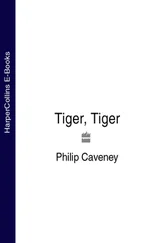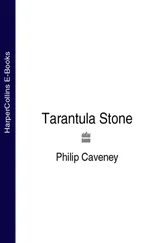One of the key factors in determining how the cave fauna will respond to a particular source of detritus seems to be whether it is first attacked by fungi or bacteria. Many fungi exclude bacteria from their chosen food by secreting antibiotics, and avoid other foods of the wrong pH which are decomposed by bacteria. Sometimes the dominance of either one or the other is determined by the size of the potential food source. In the course of a study of lava cave invertebrates on Kilauea volcano in Hawaii, I put out baits of supermarket white bread, to see what would be attracted. Some baits were in the form of crumbs spread along the rough cave wall, others were big chunks which I kneaded into golf-ball-sized lumps. The crumbs quickly went soggy and grew a thin gelatinous slime of yeast-like fungi which attracted cave-specialised millipedes and crickets; while the chunks became bacterial stink bombs infested by scuttle-fly maggots, but shunned by all the true cave fauna.
Several European biospeleologists have noticed a similar specialization between bacterial- and fungal-feeders. In general it seems that ‘surface grazing’ arthropods, such as millipedes, isopods and springtails, tend to be fungus-eaters; while ‘gulpers’ and burrowers, such as fly larvae and earthworms tend to be bacterial feeders. However, even closely related species within the same group can specialize to different foods to avoid competition. An example is found in the springtails Tomocerus minor and its congener T. problematicus , which co-exist in similar habitats in the Grotte de Sainte-Catherine, in the Ariège region of France. The former mainly munches fungi, while the latter feeds largely on bacteria-rich silt.
In general it seems that microfungi, which occur on a variety of substrates, including wood, animal faeces and plant detritus, form the most important dietary component for most terrestrial cavernicoles. In a study of several Virginia caves, Dickson and Kirk (1976) found that the abundance of the cavernicolous invertebrates was correlated with the abundance of microfungi and with high fungal-bacterial ratios, but not with abundance of bacteria or actinomycetes.
Friedrich, Smart and Hobbs (1982) summarized the literature on bacterial counts for cave sediments and waters. As might be expected, heterotrophic bacteria (which feed on inwashed organic material) are far more numerous than autotrophic bacteria (which utilise the oxidation of inorganic compounds) – but there are very wide variations. Sediments give consistently higher bacterial counts, generally of the order of 10 x 10 6g -1, but with large variations either side; while cave waters give very much lower counts, generally of the order of 100 ml -1. These authors’ own figures for different types of water inputs in Mendip caves are interesting. Swallets feeding directly into open cave passages give the highest figures (500 ml -1). Percolation recharge which is integrated into mesocavernous fissures and conduits has an intermediate bacterial count (50–300 ml -1), while diffuse flow waters in phreatic microcaverns (sampled via boreholes) give a very low count (2 ml -1). One of their conclusions is that water flow through the limestone aquifers feeding the major springs used as drinking supplies around Mendip does not provide any significant filtration of microbial input. While bacterial counts at the major Mendip risings in general do not give cause for public health concern, this may not be the case in other springs, particularly in tropical countries, used as an untreated drinking supply on the supposition that water which bubbles out of the ground must be pure. Sinkholes are widely used as rubbish dumps, attracting disease-carrying rodents, and the water which enters them may reappear many miles away as a spring, perhaps in a different valley. The late Dr Oliver Lloyd, a well-known Mendip caver, contracted Weil’s Disease from Leptospira bacteria present in Longwood Cave on Mendip, while several members of expeditions to Borneo in 1980 and 1984 (myself included) contracted a similar form of leptospirosis in the famous Mulu caves, and nearly died as a result.
In slow-moving underground streams with mud bottoms, and in drip- and seep-fed pools isolated from swallet-fed streamways, microfungi are more common than bacteria and are correlated with the abundance of macroscopic cavernicoles. Microfungi and bacteria may be utilized directly by such cavernicoles, or may be eaten by Protozoa, nematodes and other micro-fauna which are in turn eaten by Crustacea (isopods and amphipods) and aquatic insect larvae.
I have tried so far to paint a picture of the cave community as a fairly structured world, where, despite the absence of green plants, the lowly animals at the bottom of the food chain still manage a fair degree of dietary specialisation, preferring some kinds of detritus or living prey over others. In fact, the degree of specialization may be even more pronounced: not just according to the nature of the food source, but even according to the size chunks in which it is packaged. Thomas Poulson and Tom Kane, working in the enormously complex Mammoth Cave system in Kentucky, have found that the terrestrial arthropods in the cave use energy availability as the main basis for dietary specialization. Of the 44 species regularly recorded in their study area, 30 were primarily associated with one food, seven with two, six with three, and two with four of the six natural foods available to them. All the species which used more than one food source picked different stages in the decomposition of each of their foods, or different places along the gradient of food concentration so that they fed at a unique level of energy availability. Two millipedes illustrate how this works. Scototerpes feeds on the scattered droppings of cave crickets and to a lesser extent on very dispersed leaf litter in the last stages of decomposition and on veneers of leached organic matter deposited by floods on the cave ceiling and walls. The other common cave millipede, Antriadesmus specializes on cricket droppings in areas where they form thick deposits. Not surprisingly, the latter species turns out to have a higher metabolic rate and to lay more eggs than its more frugal cousin.
Poulson and Kane’s finding may go some way to explaining the unattractiveness of my cheese and liver baits in OFD. It could be that unusual concentrations of protein-rich food entering an oligotrophic (food-poor) cave, may be shunned by the cave community (except guanobia) as they represent a level of energy availability well above that to which the cavernicoles are adapted. But there may be a simpler explanation. Kathleen Lavoie of the University of Illinois noted that certain cave fungi grew better on large droppings (such as those of pack rats) than on those of smaller species. Rapid colonization by fungal hyphae formed a meshwork barrier which seemed to exclude cave arthropods from this otherwise tasty food resource. So, far from cave arthropods shunning large items of food, it may be that other, more opportunistic forms of life actively keep them at bay.
So far, we have considered only detritus as a food-source. While in sheer numbers, detritus-eaters must of course form the bulk of the cave community, it is predators and omnivores which have the greatest scope for dietary specialization, providing they are able to survive at low population densities. The predators in British caves are unspectacular creatures: mites, spiders, beetles and their larvae, amphipods, caddis larvae and flatworms. Once again, we can only speculate as to the degree of ecological specialization which they enjoy – they have not yet received any detailed study in Britain. The Americans, however, have studied their own equivalent species in considerable detail and, as there is no reason to expect cave predators of temperate American caves to behave very differently from our own, their research findings are worth repeating here.
Читать дальше












